Exploring Green Water Dragons in their natural habitat: Insights & Beautiful Photos

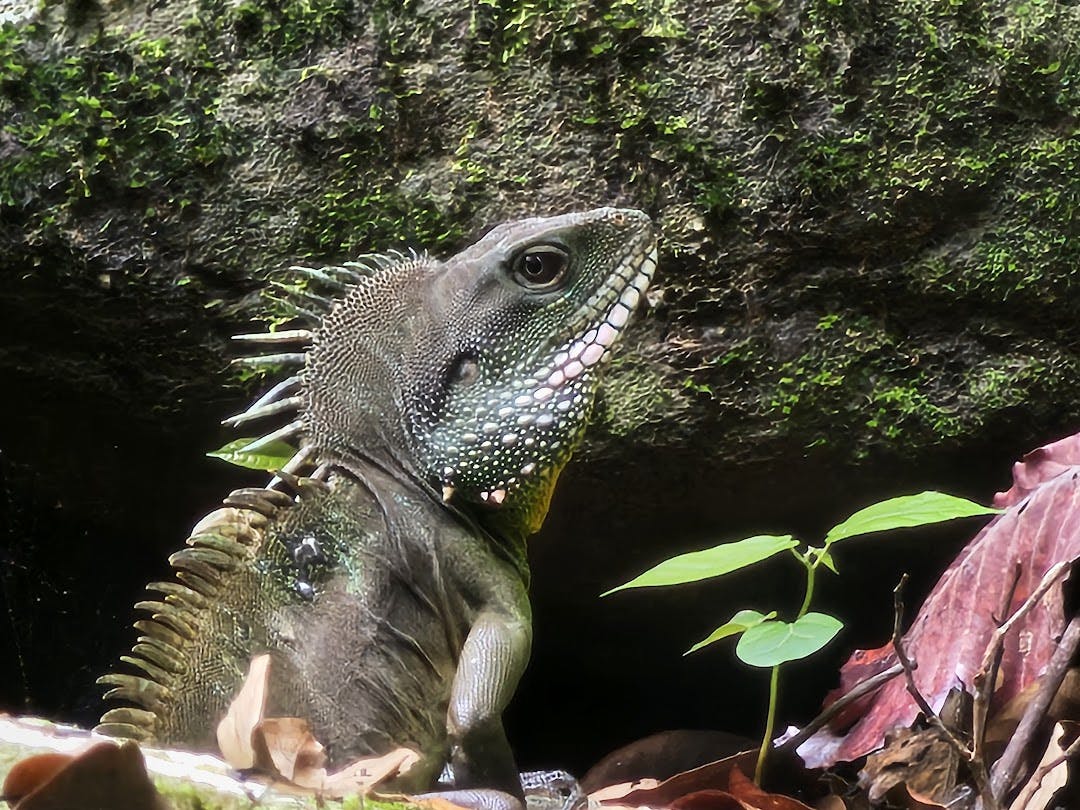

Introduction
As a reptile hobbyist, my interest extends beyond keeping reptiles in captivity. I spend considerable time out in the wild, observing these creatures in their natural habitats. Over the years, I have developed a particular fascination with the Green Water Dragon (Physignathus Cocincinus). This species is native to the lush landscapes of Vietnam, Cambodia, Laos, and Thailand, although they are also found as invasive species in Hong Kong and Taiwan. In this article, I will share my practical insights and personal observations, providing a guide for individuals interested in Green Water Dragons or those who keep them in captivity. While I may not be a scientist, my experiences and observations offer valuable perspectives from the perspective of a serious reptile enthusiast.
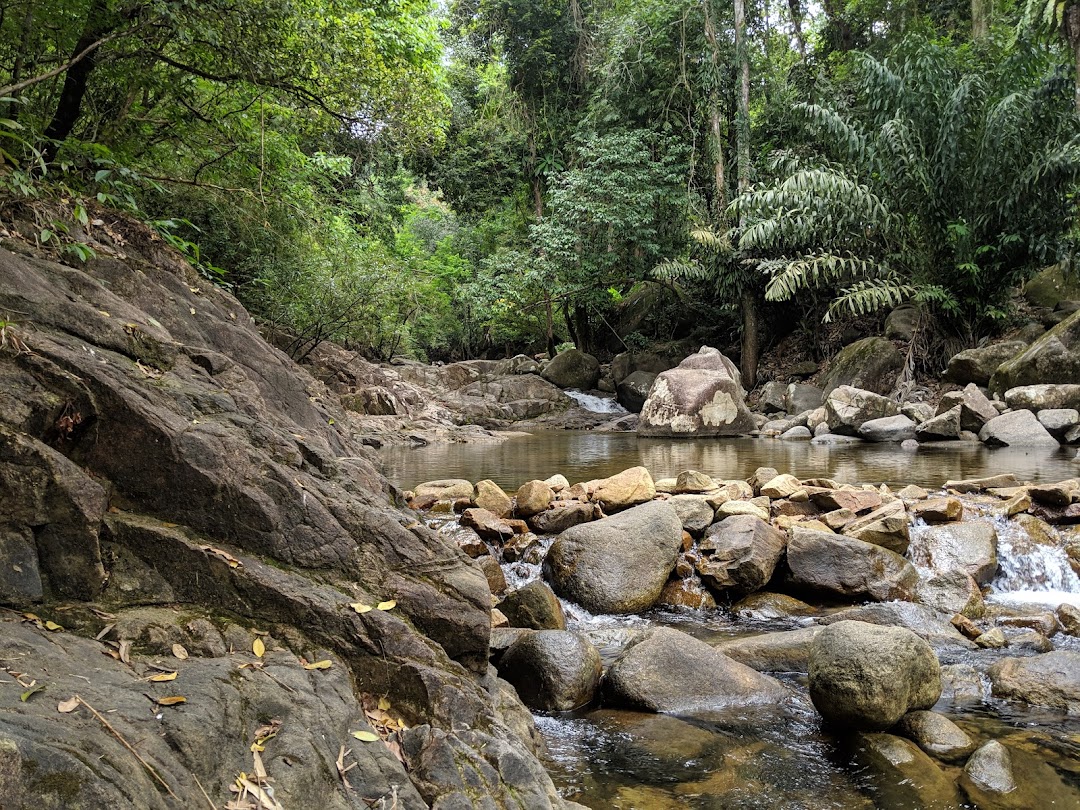 A prime example of a Green Water Dragon habitat: A river where these creatures are found in abundance
A prime example of a Green Water Dragon habitat: A river where these creatures are found in abundance
Method of Herping
To embark on my quest to encounter Green Water Dragons in their natural habitat, I utilized a specific method known as herping. I would visit waterfalls and rivers within their native range, primarily focusing on Thailand. Walking along the rivers, I would carefully inspect rocks and overhanging tree branches, which served as prime basking spots for the dragons. Interacting with local people and park rangers provided invaluable knowledge and insights. While attempting to photograph the dragons, I faced challenges as they were often elusive and quick to flee. In case they ran away, I took ultraviolet index (UVI) and temperature measurements at the exact spot they were sitting, while for undisturbed dragons, I recorded approximate UVI and temperature readings. All my observations were conducted during daylight hours.
Essential Tools
Throughout my herping expeditions, I relied on specific tools to gather accurate data. The Solar Meter 6.5 helped me measure the ultraviolet index (UVI) at various locations. I used a temperature gun to measure surface temperatures of rocks or sticks where the Water Dragons were often found. An ambient temperature/humidity meter (UNI-T UT333S) provided readings of ambient temperature and humidity in the dragon's habitat.
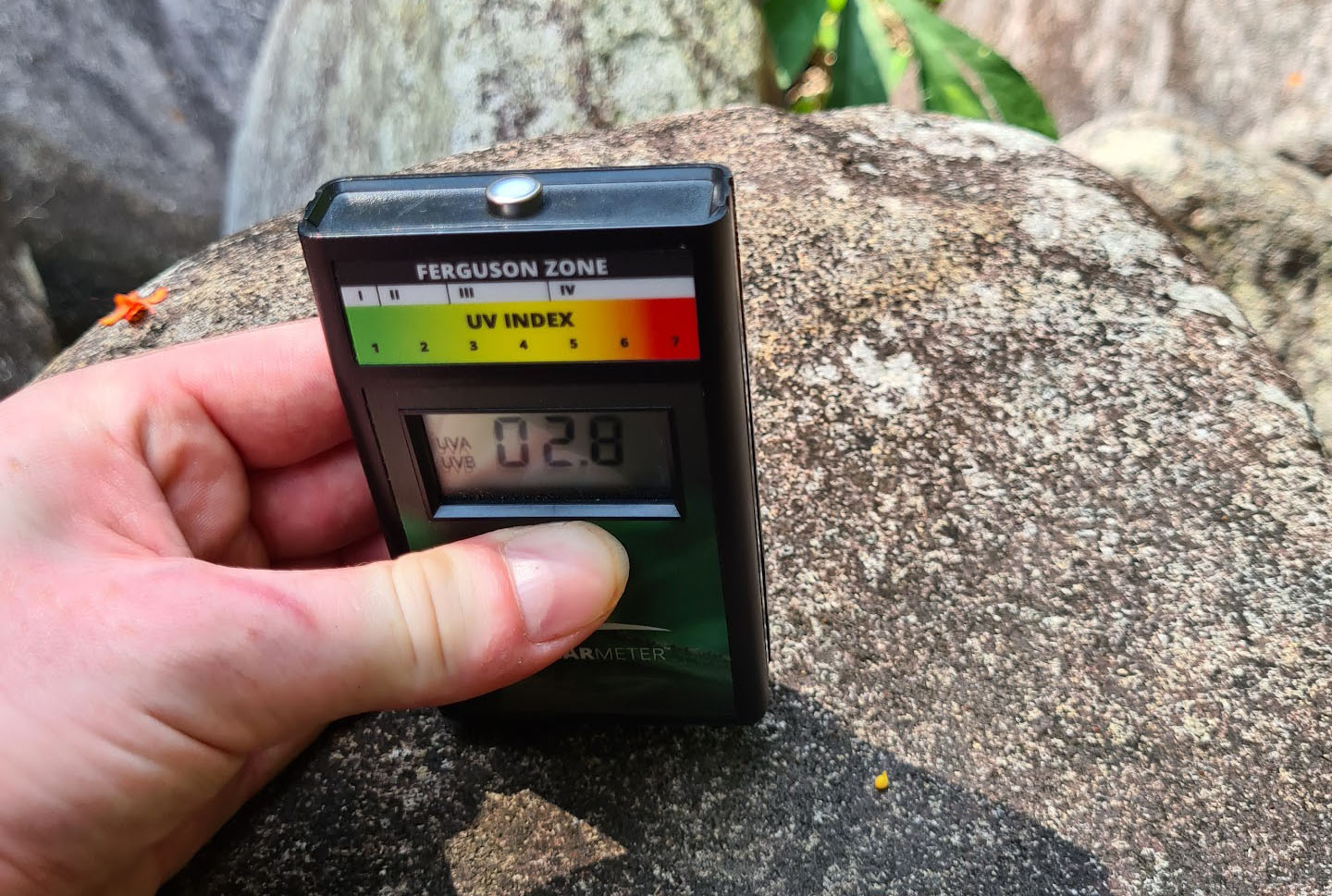 Measuring the UVI at a basking spot just deserted by an adult Green Water Dragon
Measuring the UVI at a basking spot just deserted by an adult Green Water Dragon
What I've Learned
After countless hours spent observing and studying Green Water Dragons in their natural environment, I have gathered valuable insights and noteworthy observations. In most places, Green Water Dragons are not commonly found, despite local reports suggesting their presence. This could be attributed to various factors. Firstly, they are challenging to spot due to their exceptional ability to hide effectively. Additionally, they may exist in low numbers in certain areas. Moreover, they might inhabit hard-to-reach spots, such as treetops or other elusive locations, especially during the dry season. However, my persistence and dedication have allowed me to make noteworthy observations. These dragons are most frequently spotted in larger numbers on rainy days, likely due to their increased activity near the water during such conditions.
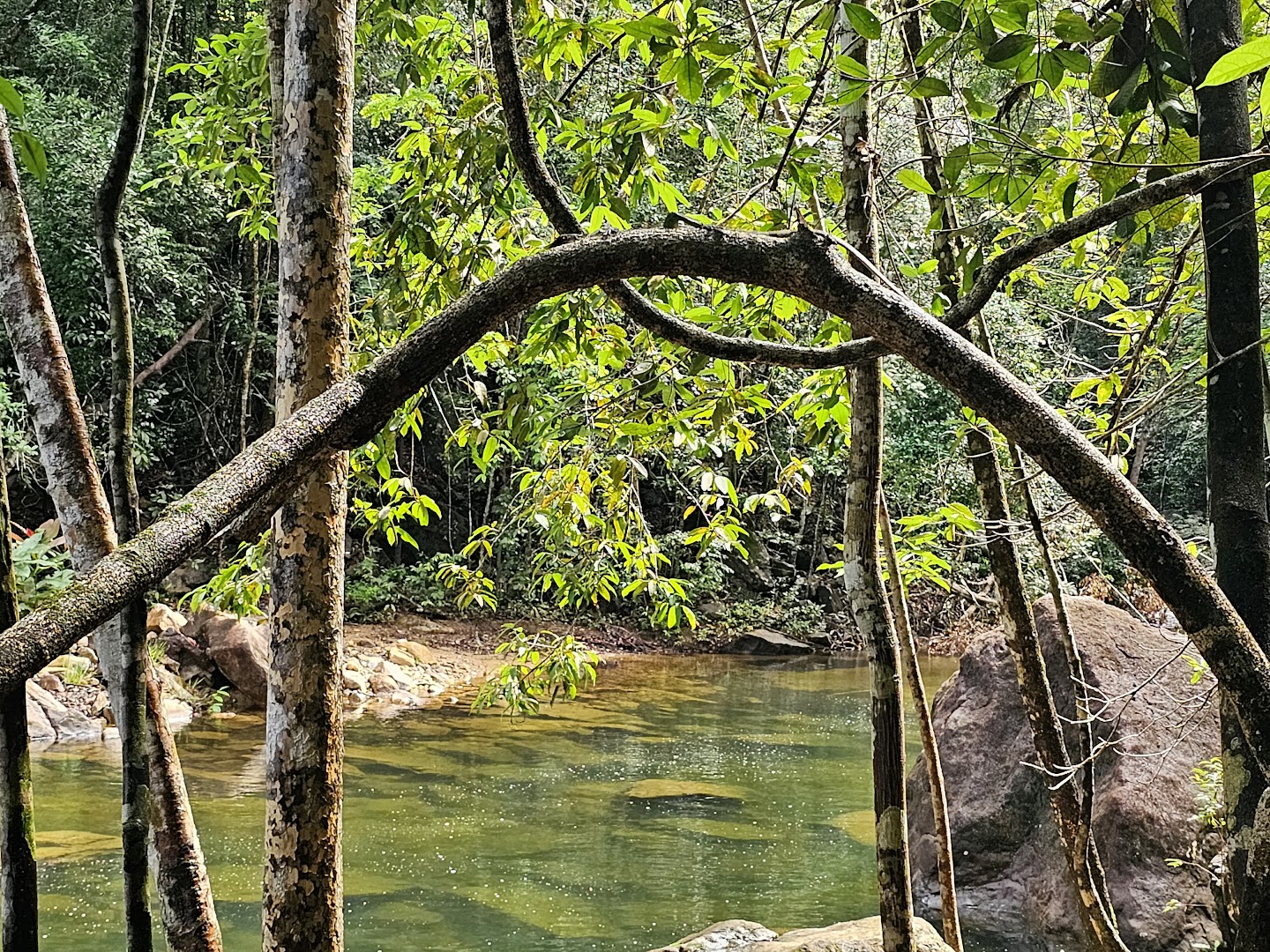 Spot the hidden adult male Green Water Dragon: Look closely behind the curvy vine in the foreground, where a hint of its head, legs, and tail peek out
Spot the hidden adult male Green Water Dragon: Look closely behind the curvy vine in the foreground, where a hint of its head, legs, and tail peek out
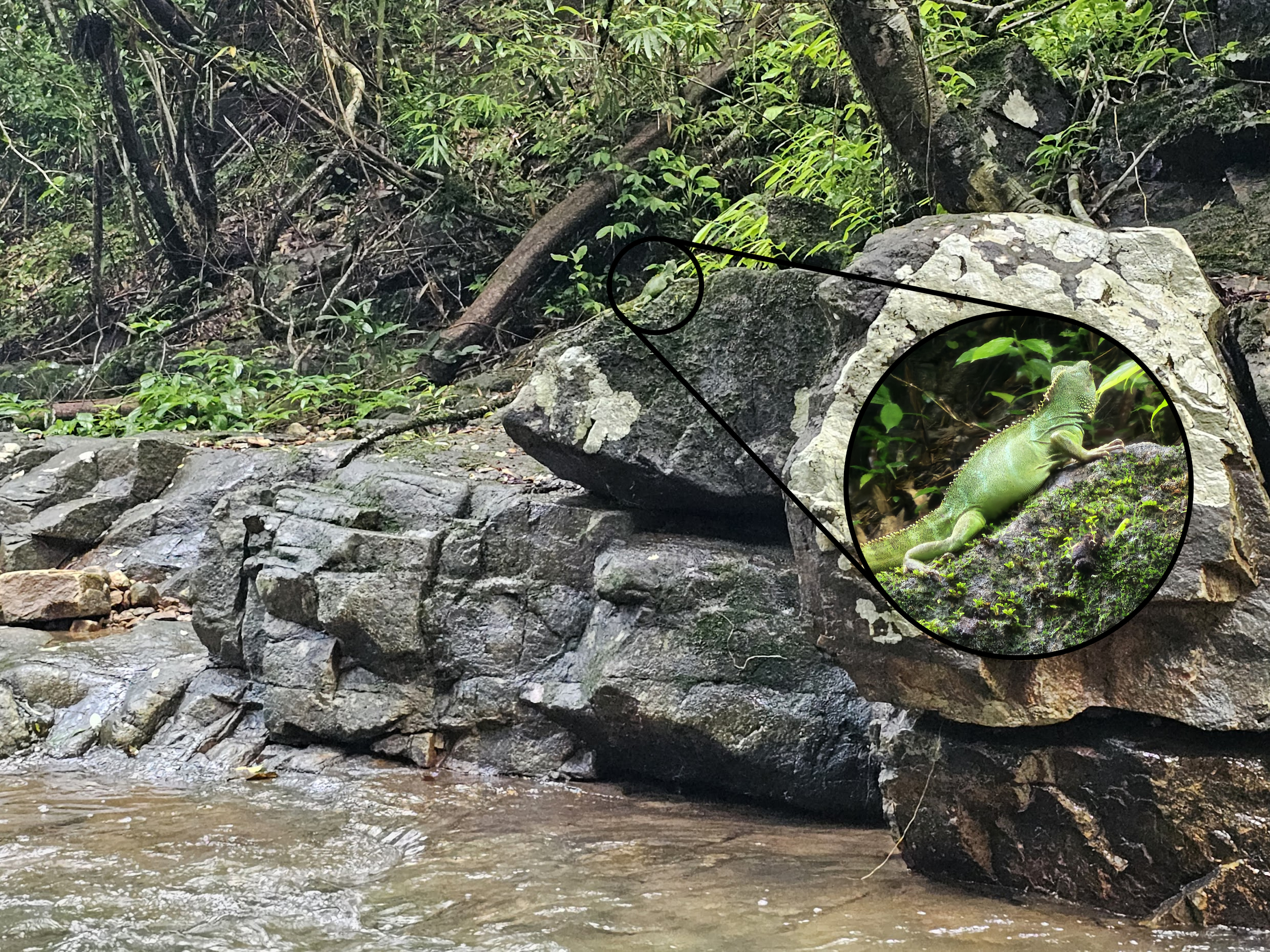 Green Water Dragon female spotted near water on a rainy day, displaying their increased activity during such conditions
Green Water Dragon female spotted near water on a rainy day, displaying their increased activity during such conditions
Preferred Environments
Green Water Dragons primarily inhabit areas near streaming water, never in close proximity to non-streaming water. They tend to favor partially open canopies, often choosing rocks or tree branches as their preferred basking and resting spots. These dragons are frequently found near clear water sources, although they occasionally inhabit murkier (brown) water as well. Adult males often perch themselves in prominent locations, such as the top of large boulders, making them easier to spot. They establish their own territories, which are not excessively large, as they are sometimes observed in close proximity to each other without aggression (down to about 10 meters). Females and juveniles, on the other hand, are more concealed and seem to be able to move freely between male territories. Occasionally, I have observed males accompanied by one or two females within very close proximity (less than 3 meters).
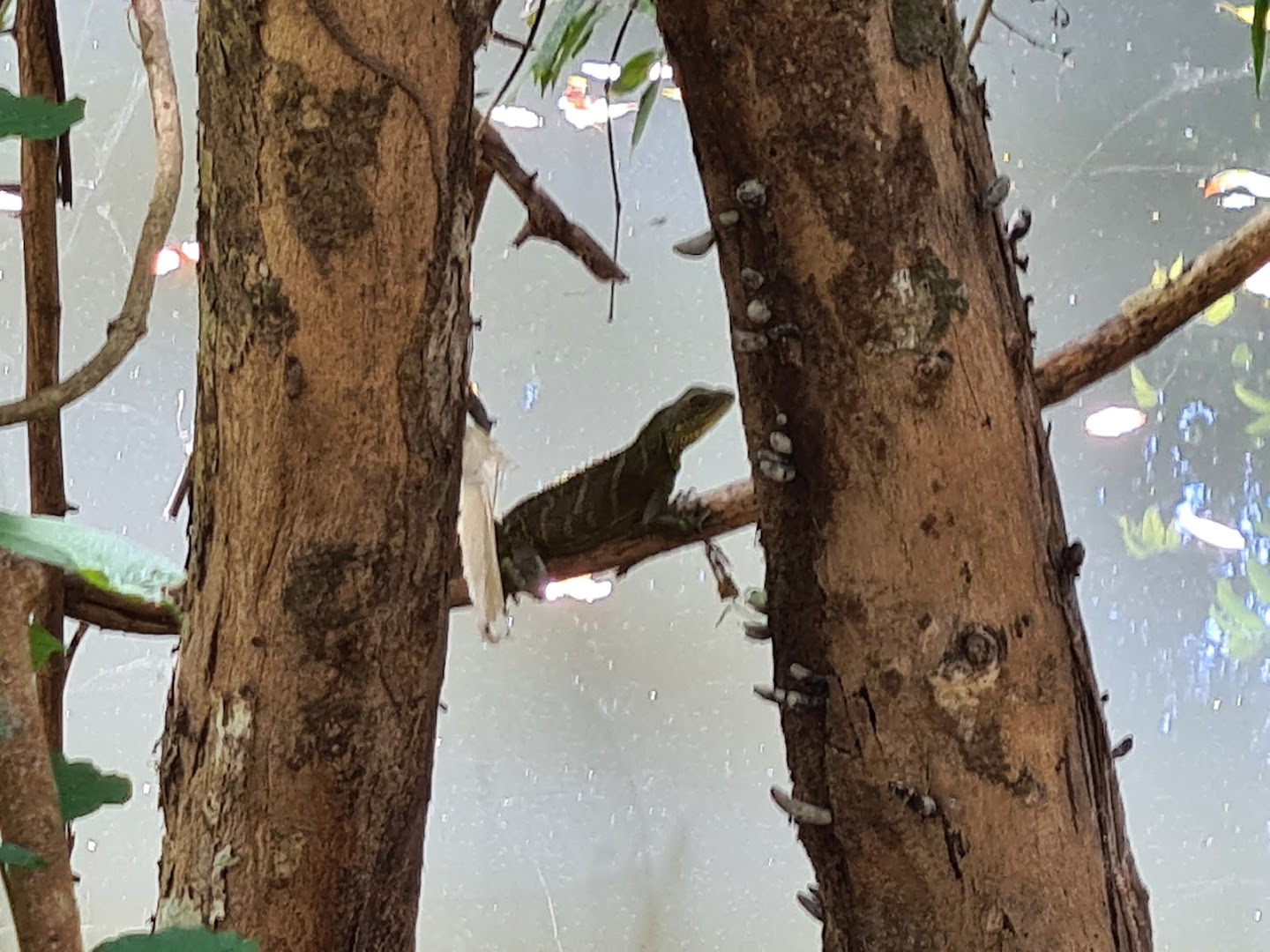 A female dragon in a tree above streaming, murky water
A female dragon in a tree above streaming, murky water
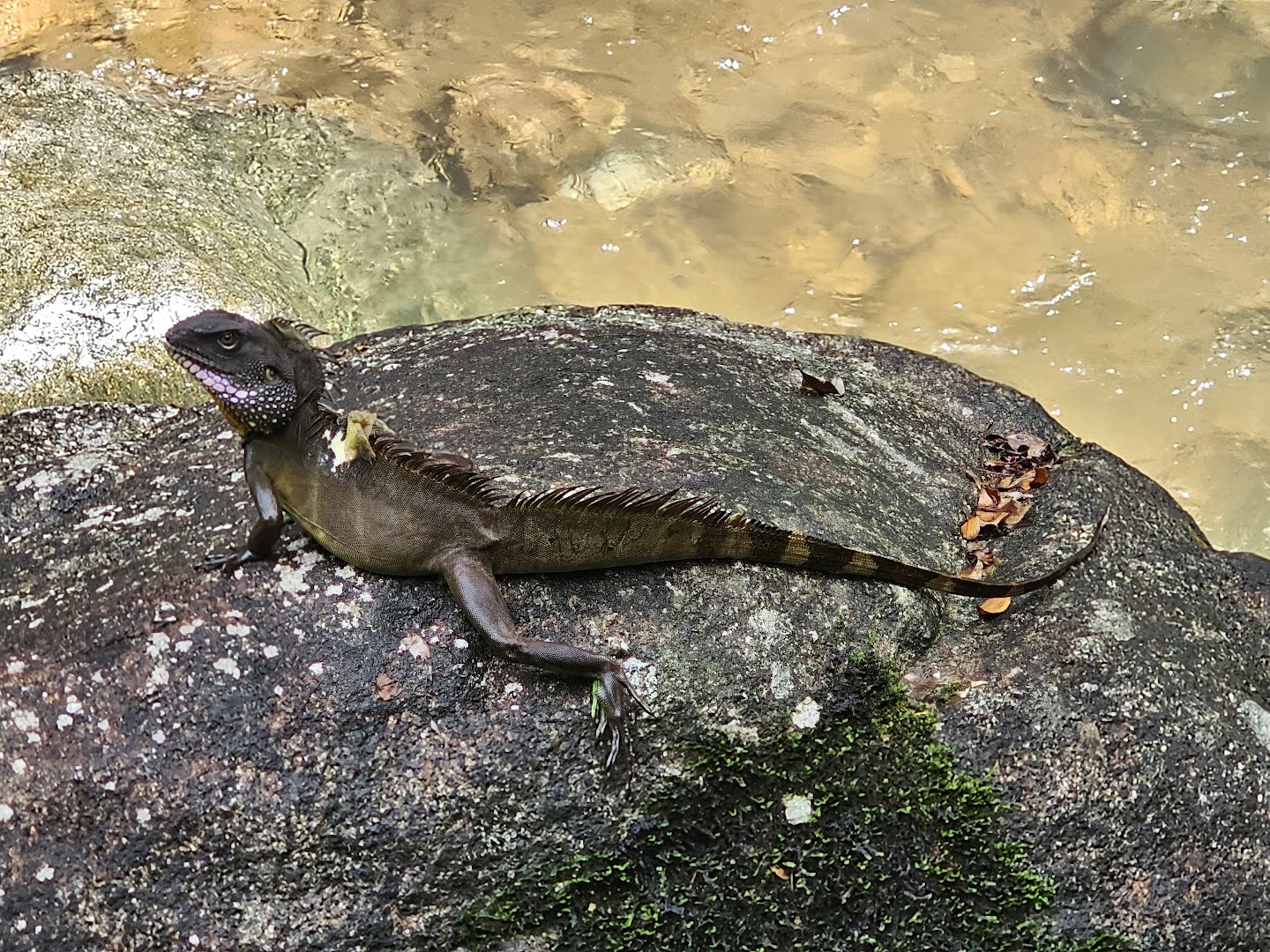 A male dragon perched on a large boulder over streaming, clear water
A male dragon perched on a large boulder over streaming, clear water
Behavior when Disturbed
When disturbed, Green Water Dragons typically retreat into the bushes or seek refuge in crevices to ensure their safety. In some instances, they may also opt to escape into the water, taking a dive as a means of evading perceived threats. Additionally, I have had the opportunity to observe these remarkable creatures engaging in other intriguing behaviors. For instance, I have witnessed Green Water Dragons bathing in shallow water or even swimming recreationally, showcasing their adaptability and comfort in aquatic environments.
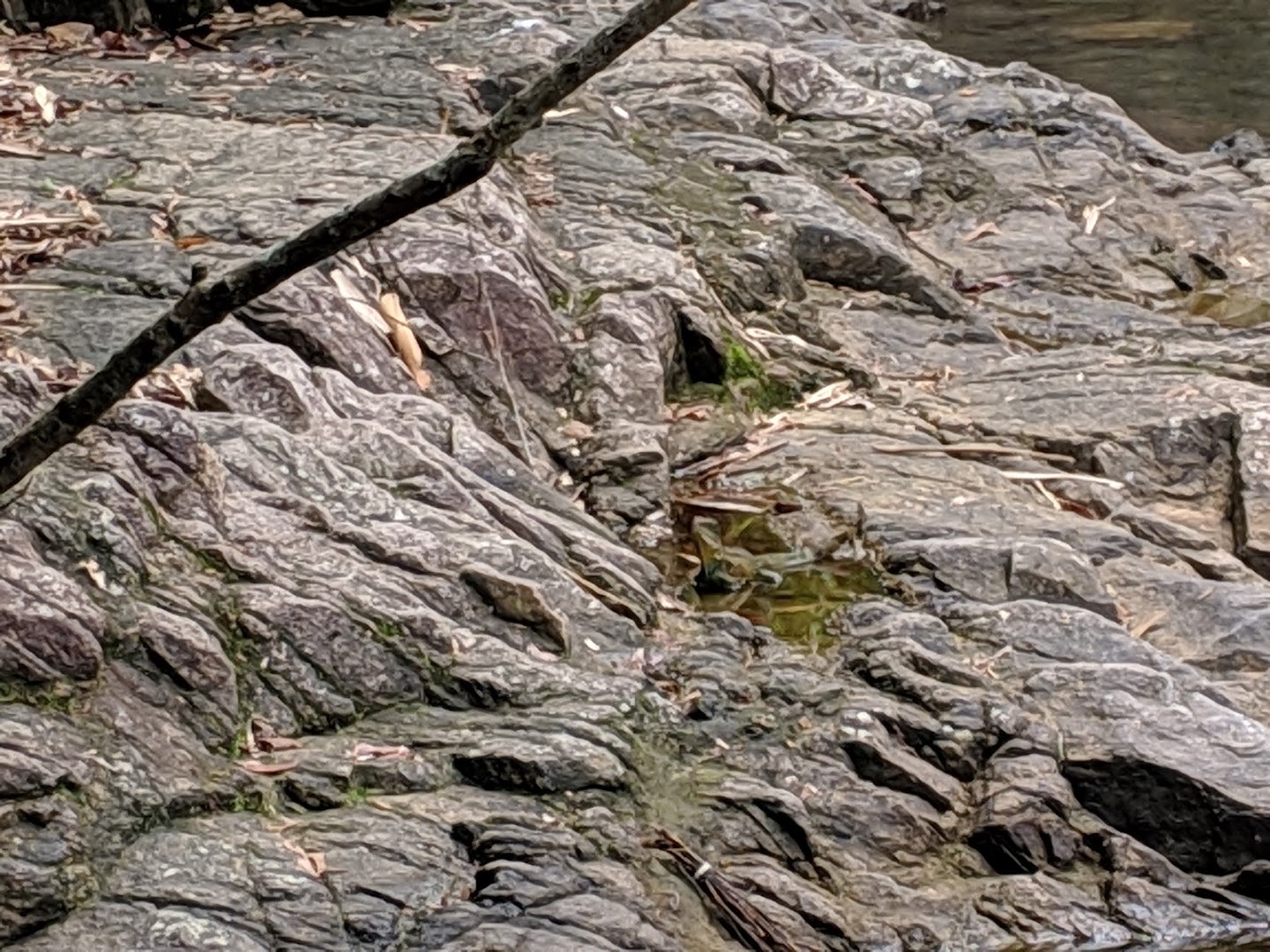 A female Green Water Dragon seen bathing in a small pool beside a large river, moments before submerging and scratching her belly on the rocks
A female Green Water Dragon seen bathing in a small pool beside a large river, moments before submerging and scratching her belly on the rocks
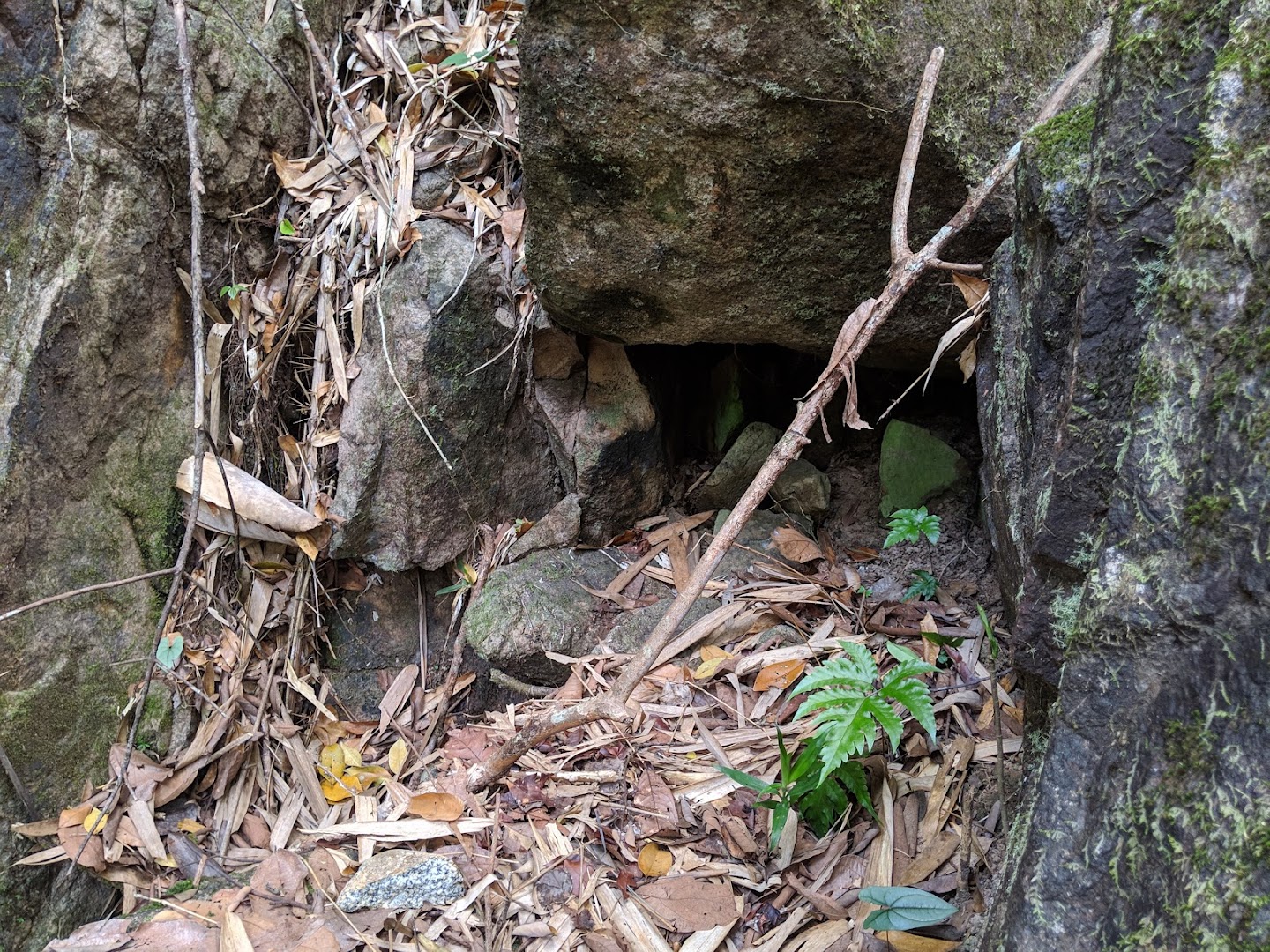 An adult male Green Water Dragon's chosen hideaway in response to disturbance
An adult male Green Water Dragon's chosen hideaway in response to disturbance
Egg Laying Behavior
Although I have not personally witnessed Green Water Dragons laying eggs, local reports provide insights into their nesting habits. They typically lay eggs on sandy riverbanks, which serve as ideal locations for incubation. Some reports suggest that they may lay eggs further away from the water in soil. According to local suggestions, females employ deceptive tactics by digging multiple holes to confuse predators before neatly covering the actual nest. Locals report that the timing of egg-laying most often coincides with the dry season. This observation aligns with the higher number of juveniles I have observed during the wet season, approximately two to three months after the conclusion of the dry season.
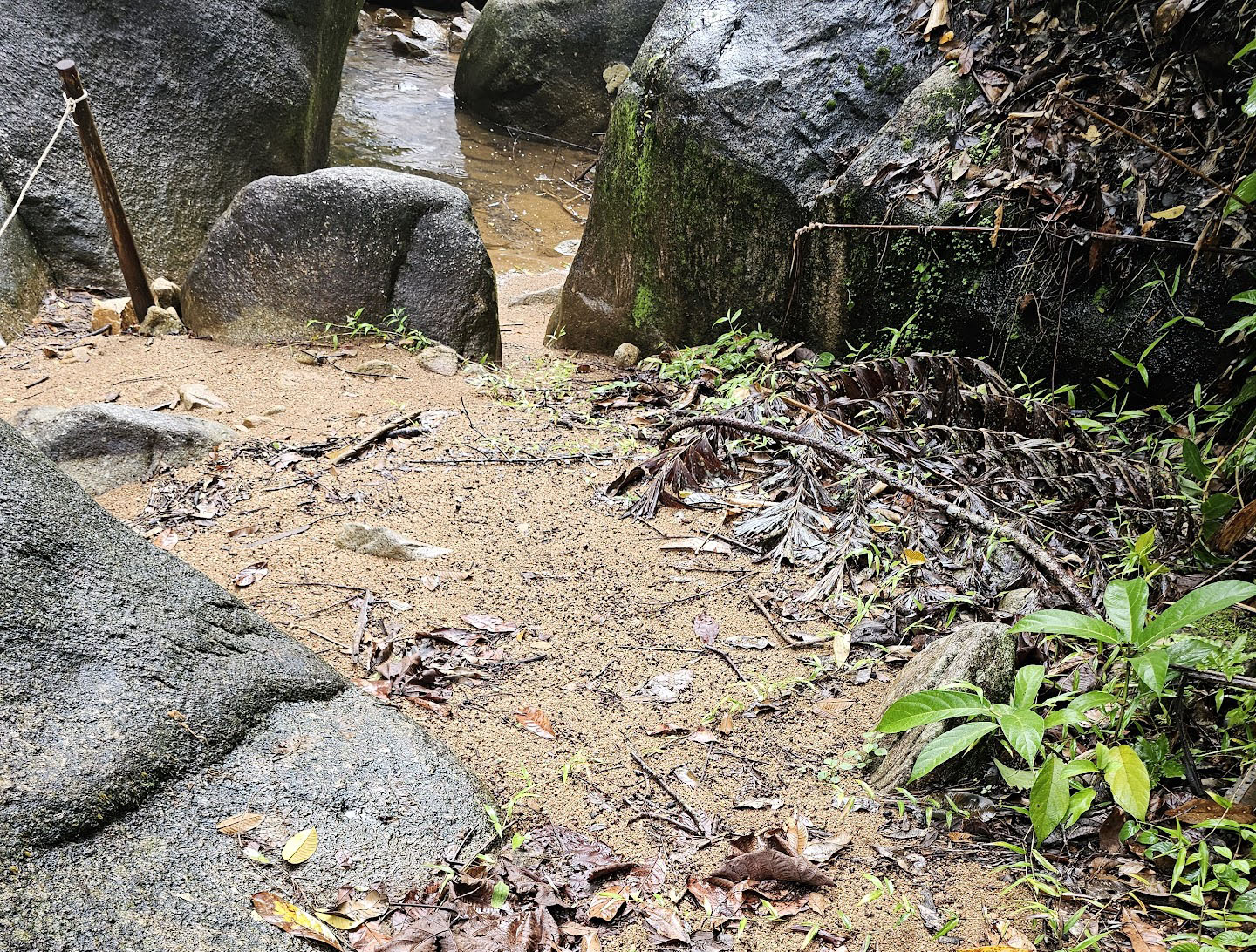 A nesting ground commonly recognized by locals, where Green Water Dragons are known to frequent. The surface temperature of this area has been measured at 33.9 degrees Celsius on a sunny day during the dry season. A separate measurement taken on an overcast day during the wet season recorded a temperature of 27.6 degrees Celsius.
A nesting ground commonly recognized by locals, where Green Water Dragons are known to frequent. The surface temperature of this area has been measured at 33.9 degrees Celsius on a sunny day during the dry season. A separate measurement taken on an overcast day during the wet season recorded a temperature of 27.6 degrees Celsius.
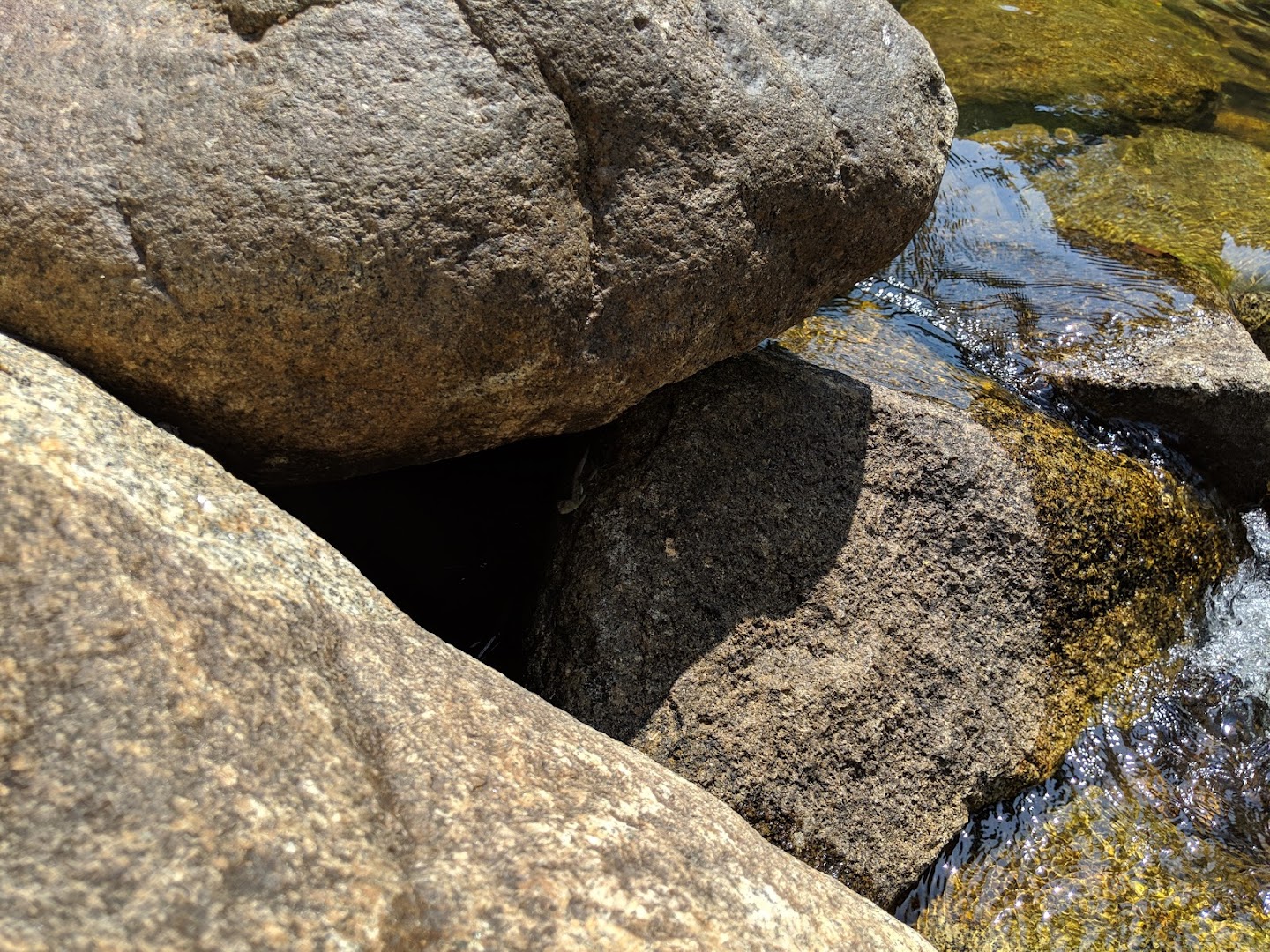 A newborn juvenile seeking respite from the heat, just before the onset of the wet season
A newborn juvenile seeking respite from the heat, just before the onset of the wet season
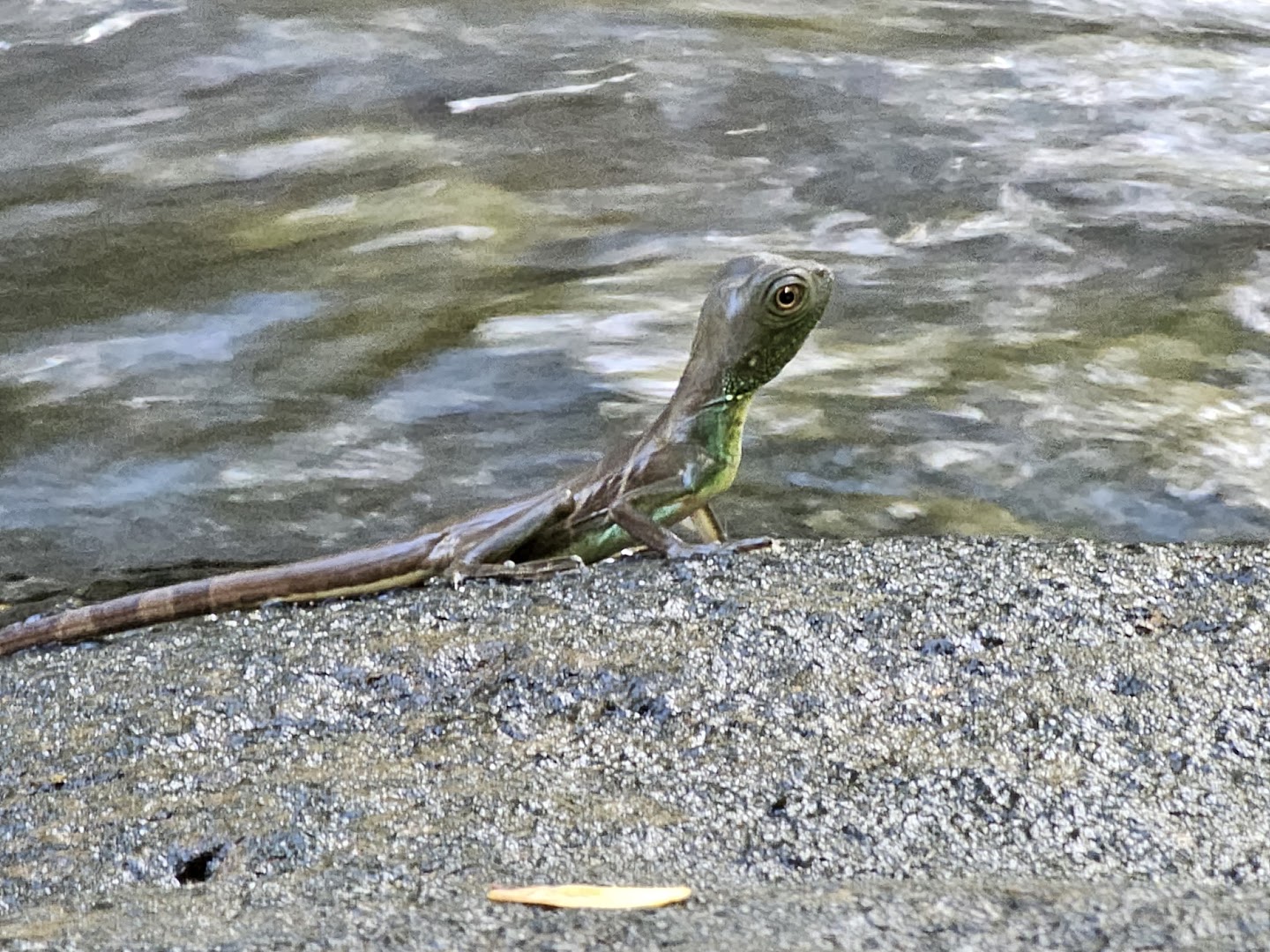 A newborn juvenile in the start of the wet season
A newborn juvenile in the start of the wet season
Close Proximity to Other Species
During my encounters with Green Water Dragons, I observed various other creatures in close proximity to them. These included lizards such as Sphenomorphus maculatus, Varanus Salvator, Calotes Versicolor, and Calotes Emma. Snakes such as Vogel's Pit Viper and Cardamom Mountains Green Pit Viper were also observed. Fish species like Golden Mahseer Barb and various others such as Schisturas, Rasboras and Barbodes, as well as a sweetwater crab, were present in the dragon's habitat. Additionally, the area boasted a diverse array of butterflies, mosquitoes, and leeches
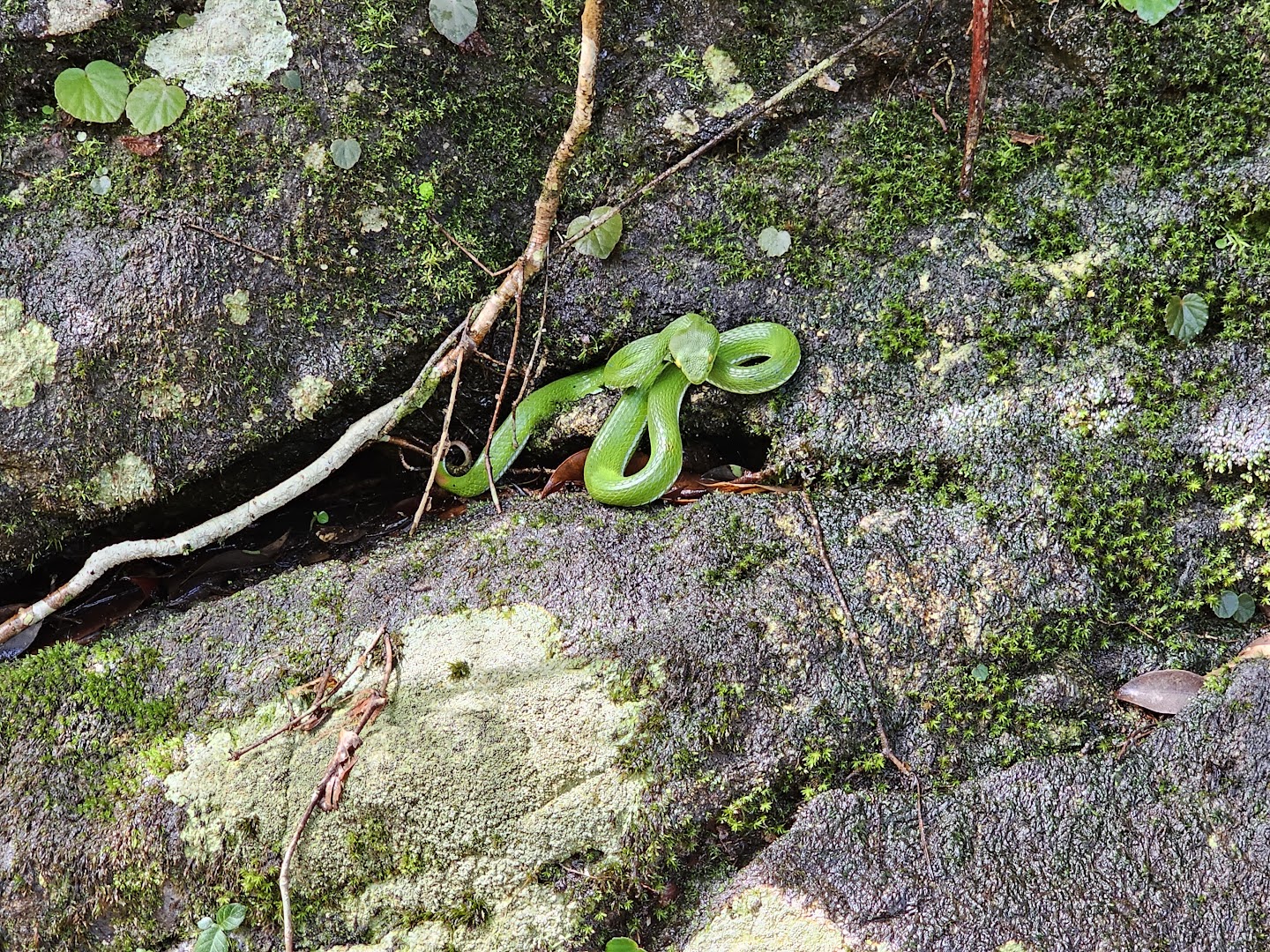 A Cardamom Mountains Green Pitviper (Trimeresurus cardamomensis) found in close proximity to an adult Water Dragon, with a distance of approximately 3 meters between them
A Cardamom Mountains Green Pitviper (Trimeresurus cardamomensis) found in close proximity to an adult Water Dragon, with a distance of approximately 3 meters between them
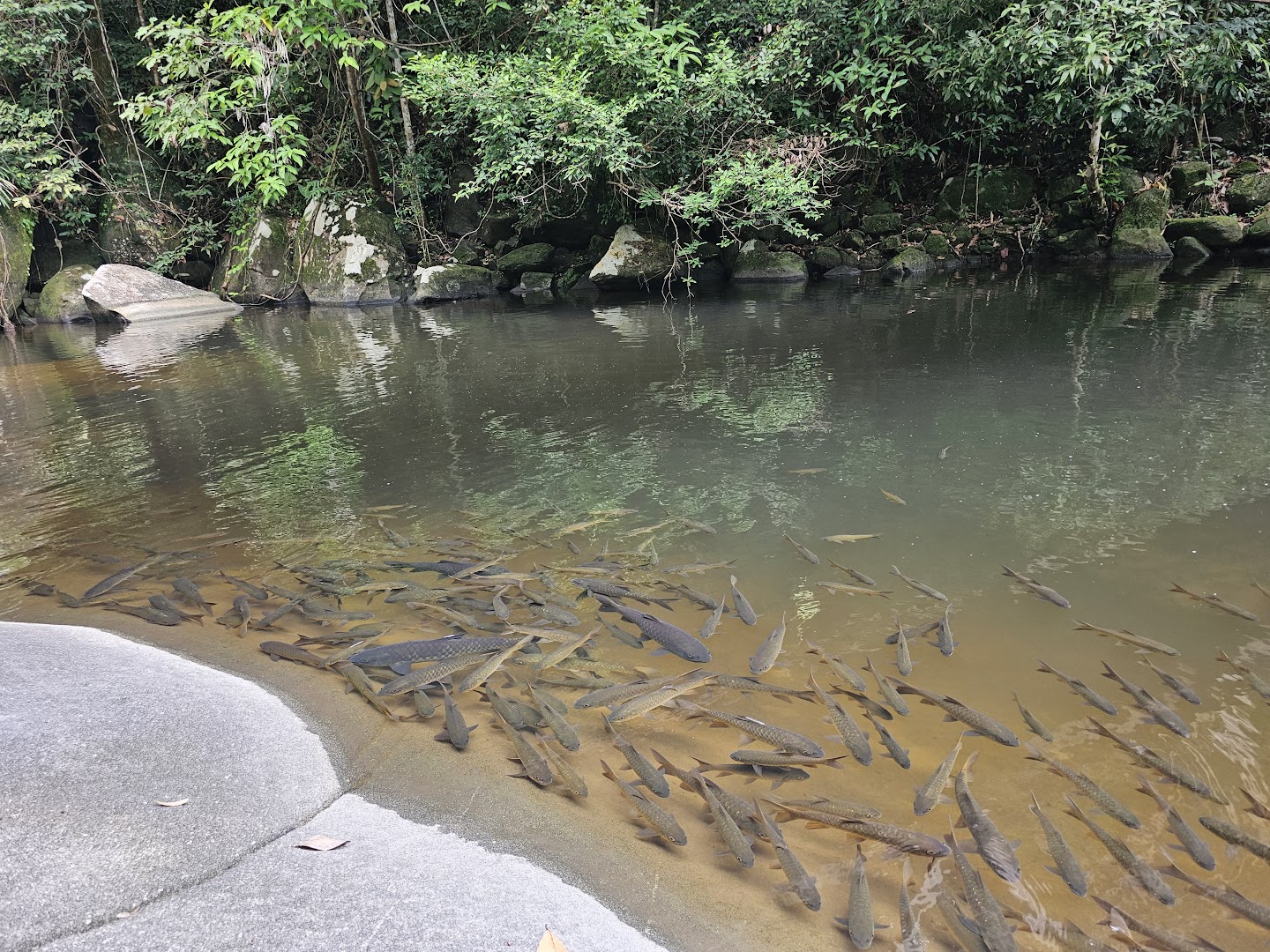 Golden Mahseer Barbs swim in the same area where Green Water Dragons live, showing the variety of life in this place
Golden Mahseer Barbs swim in the same area where Green Water Dragons live, showing the variety of life in this place
Measurements and Environmental Parameters
Through diligent measurements, I gained insights into the environmental conditions that Green Water Dragons prefer. They often seek areas of thermal comfort, positioning themselves in shadow or partial shade when ambient temperatures are high. Sunbasking behaviors were occasionally observed, primarily in the morning. Water temperatures in the dragon's habitat ranged from 22 to 28 degrees Celsius. Surface temperatures of rocks or sticks where Green Water Dragons perch exhibited readings between 24 and 32 degrees Celsius when in the shade or basking. Ultraviolet index (UVI) readings ranged between 0.5 and 3 when the dragons were observed basking, while during thermoconforming behavior, UVI levels were generally below 0.5. Ambient humidity levels varied between 55-70% during the dry season and 90-97% during the wet season. Ambient temperatures typically ranged from 24-27 degrees Celsius in the morning and 26-32 degrees Celsius in the afternoon.
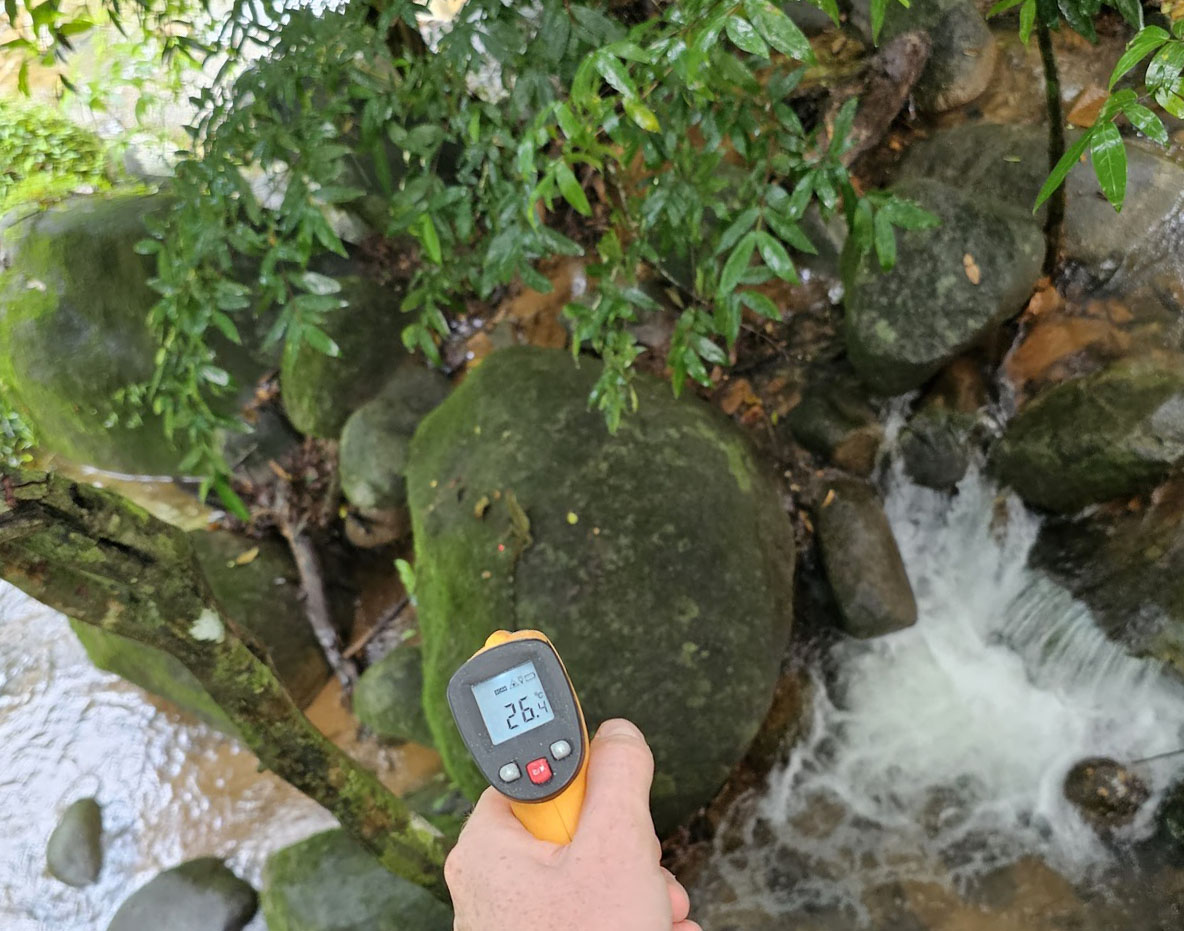 Measuring the surface temperature of a thermoconforming female Water Dragon in the wet season. Notice how the lizards blends in with the environment perfectly
Measuring the surface temperature of a thermoconforming female Water Dragon in the wet season. Notice how the lizards blends in with the environment perfectly
Insights for Captive Keeping Hobbyists
In my personal experience and observations, I have gained valuable insights that can greatly benefit the care of Green Water Dragons in captivity. Understanding that these creatures are the result of countless generations of evolutionary fine-tuning for survival in their specific habitats, it has become clear to me that they thrive when provided with conditions that mimic their natural environment. One crucial aspect is ensuring they have access to fresh, streaming water sources, as non-streaming water simply doesn't meet their needs. Creating an enclosure that replicates their natural environment, complete with a suitable ultraviolet index (UVI) and temperature gradient, is of utmost importance.
I have noticed that Green Water Dragons tend to frequent habitats with a partially-open canopy, and they appear to be quite comfortable in rocky surroundings. Therefore, it is essential to incorporate rocks, branches, and various elements within their enclosure to truly cater to their well-being. However, one observation that stands out to me the most is their affinity for seeking refuge near vegetation. This behavior underscores their evolved adaptation for survival in the wild and underlines the significance of live plants in the enclosure for their sense of security.
In my view, the vibrant green coloration of Green Water Dragons serves a purpose beyond aesthetics. It allows them to blend in and camouflage effectively among the surrounding vegetation, a characteristic honed by their evolutionary journey. By including rocks, branches and live plants in their enclosure, we can provide these dragons with a familiar and comforting environment that aligns with their natural instincts. It not only enhances the visual appeal but also contributes to their overall well-being by creating a space where they can feel protected and at ease.
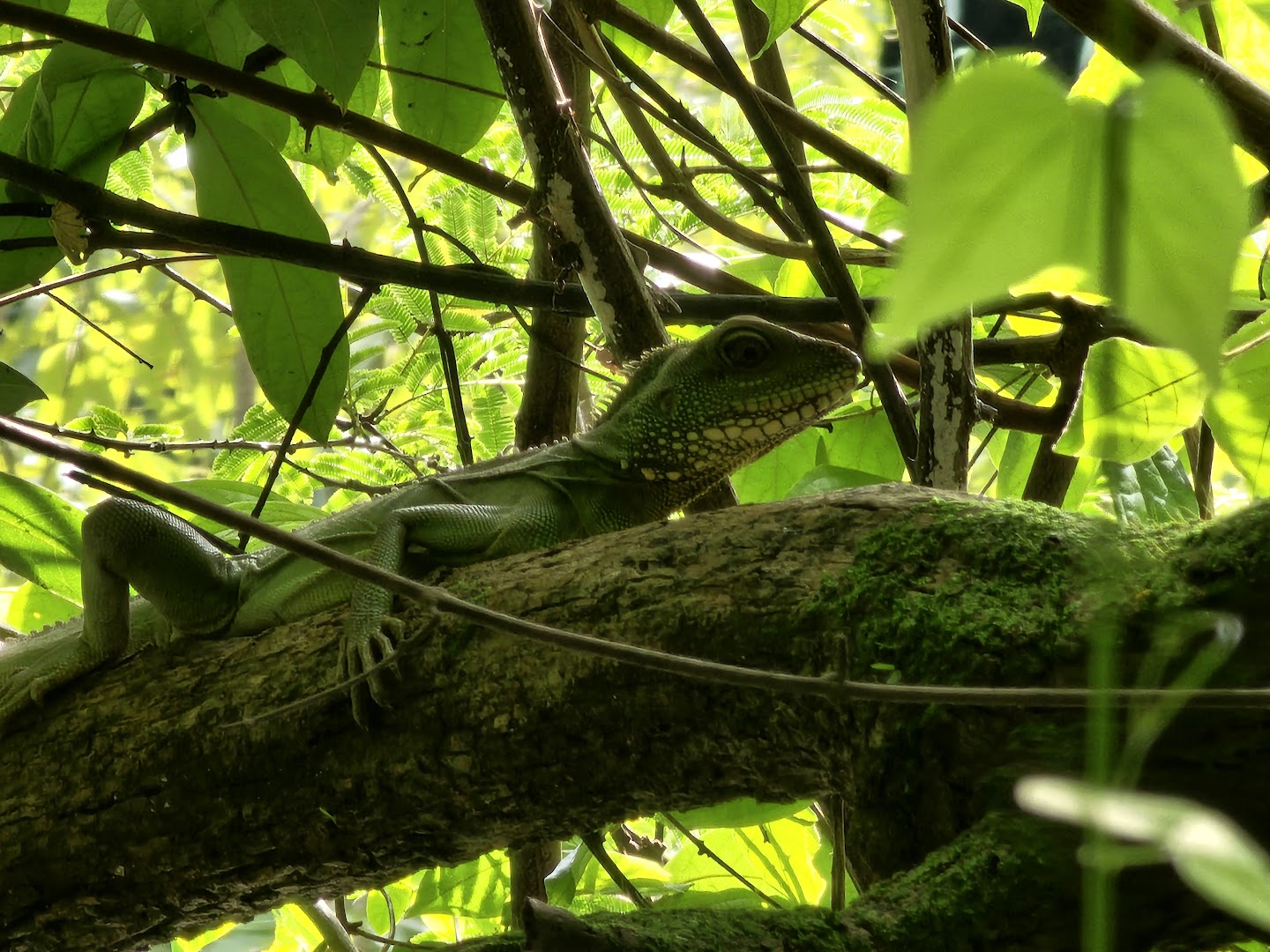 A female Green Water Dragon expertly camouflaged among green foliage, demonstrating the survival advantage of her natural coloration
A female Green Water Dragon expertly camouflaged among green foliage, demonstrating the survival advantage of her natural coloration
Based on these personal observations and beliefs, I strongly recommend understanding and implementing these insights, including the incorporation of rocks and live plants, to provide the best possible care for Green Water Dragons in captivity. This approach respects their evolutionary adaptations and provides an environment where their natural behaviors can be expressed, leading to healthier and happier dragons.